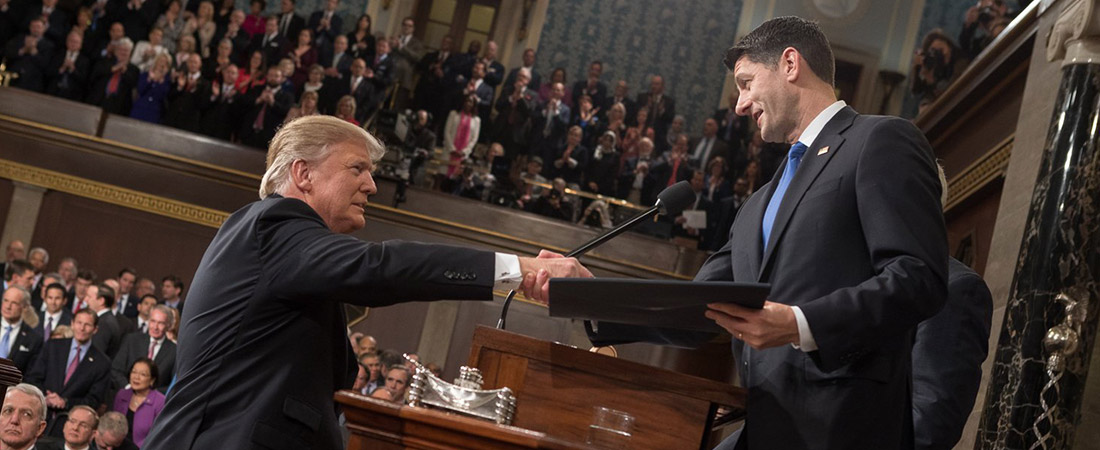Nov 10, 2017
Why President Trump Likes the Senate Tax Plan
There are big differences between the Senate tax bill, released on Thursday, and the bill released by the House last week.

President Donald Trump would like to enact tax reform legislation before 2018.
But there are huge divisions between the Senate tax bill, released on Thursday, and the House bill from last week. Whether the House and Senate can shore up their differences to pass legislation in the next six weeks is an open question.
The president, however, says he favors the Senate plan. “You’re going to like it a whole lot more,” he reportedly told a group of Democratic Senators this week.
Responding to criticisms that the House bill overwhelming favors the wealthiest earners–nearly half of the cuts would go to the nation’s wealthiest one percent of earners according to research–the Senate bill attempts to shore up popular tax incentives for the middle class.
It also makes some important tweaks to the House plan regarding corporate taxes and taxes for the wealthy.
Here’s a quick look at the differences in the Senate bill.
- The Senate plan maintains seven tax brackets. The House plan would have reduced the number of brackets to four, eliminating the bottom rate of 10%. The standard deduction–or amount of income free from taxes–for families and individuals, however, would double to $24,000 and $12,000 respectively in both the Senate and House bills.
- The interest deduction will remain, for mortgages up to $1 million. The House plan would have sliced the size of eligible mortgages in half.
- Big companies will have to wait until 2019 to see their tax rate go down to 20%, from a current rate of around 35%. The House bill would have cut the corporate rate immediately.
- The deduction for medical expenses will stay; The House plan eliminates this deduction. Health care groups and other lobbyists criticized the House plan for imposing a burden on individuals and families with big medical needs. A similar deduction for student loan interest, excluded from the House bill, would stay in the Senate version.
- Deductions for state and local taxes would disappear. The House plan would have allowed a $10,000 property tax deduction. Representatives in high tax states including New York, New Jersey and California object to this provision.
- The estate tax of 40% would remain, but for estates valued at $11 million or more, or double the current estate value. The House plan would have eliminated the estate tax entirely by 2024.
Stash Learn Weekly
Enjoy what you’re reading?
[contact-form-7 id="210" title="Subscribe" html_id="default"]Republicans would like to cut taxes by $1.5 trillion over the next decade. But the House tax plan would create a deficit closer to $1.7 trillion according to the Congressional Budget Office, and increase the national debt by at least $3 trillion over the next decade, according to a new analysis by the Tax Policy Center.
House Majority Leader Kevin McCarthy (R-Calif.) told NPR on Thursday that he expects a reconciled bill to emerge in the House by late next week.











